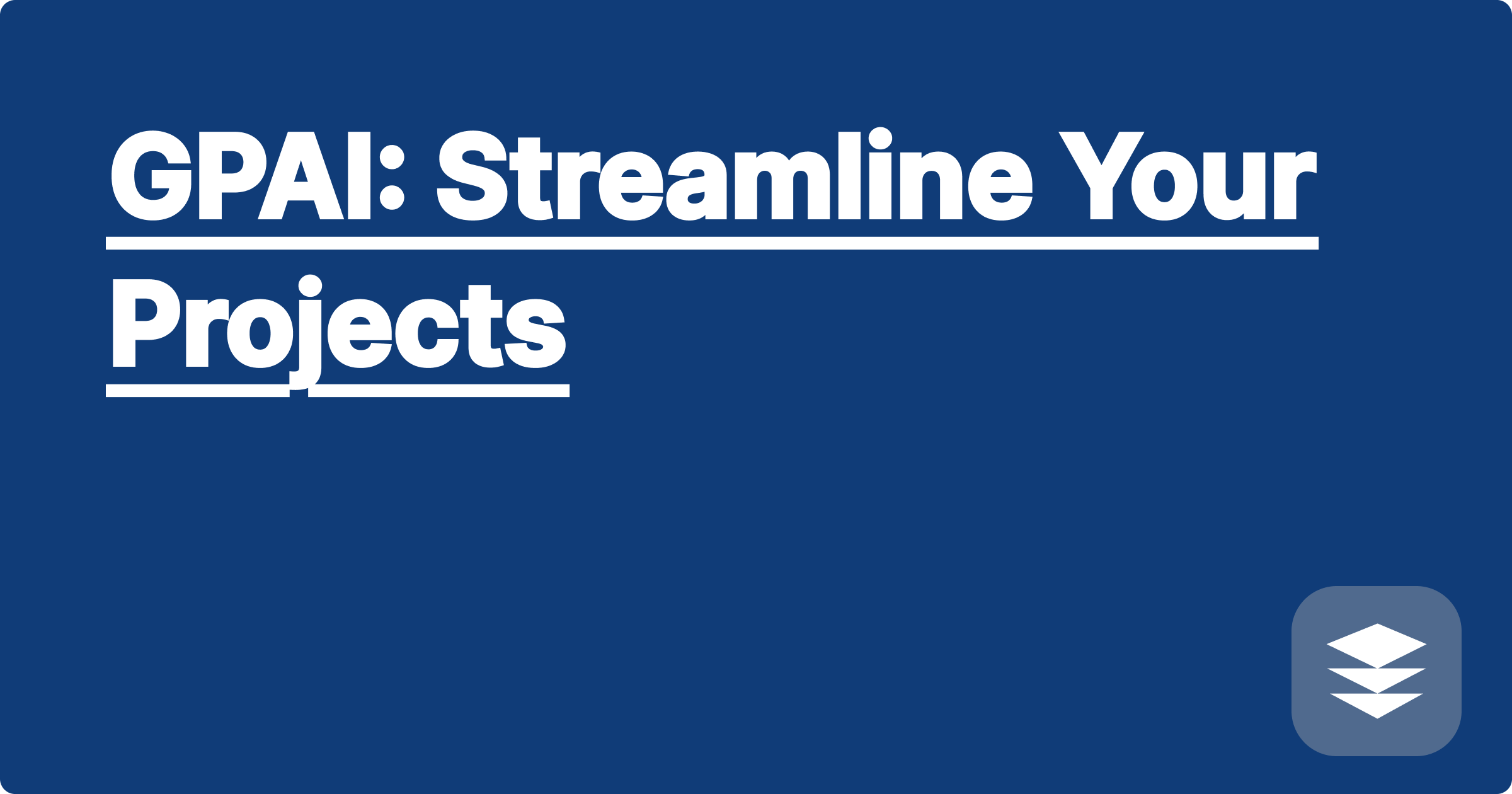
As STEM students and researchers, we constantly face the pressure of complex projects, tight deadlines, and the ever-growing demand for innovative solutions. Juggling coursework, research, and personal commitments can feel overwhelming, leaving us feeling like we're constantly playing catch-up. But what if there was a way to streamline our projects, optimize our workflow, and unlock our full potential? Artificial intelligence (AI) is rapidly transforming the STEM landscape, offering powerful tools and resources to boost productivity and enhance learning. This blog post will explore how leveraging AI, particularly through a hypothetical platform called GPAI, can revolutionize your project management and academic journey. We'll delve into practical examples, explore various AI-powered tools, and share actionable tips to help you integrate AI seamlessly into your workflow.
This isn't just about using fancy new tech; it's about working smarter, not harder. By embracing AI, you can free up valuable time and mental energy, allowing you to focus on the core aspects of your projects: critical thinking, problem-solving, and innovation. Whether you're struggling with a complex coding assignment, analyzing massive datasets, or writing a research paper, AI can be your secret weapon to achieving academic success and staying ahead of the curve.
STEM projects often involve intricate calculations, extensive literature reviews, complex data analysis, and meticulous documentation. These tasks can be incredibly time-consuming, often leading to burnout and frustration. Traditional methods of project management, like manual literature searches, hand-written notes, and spreadsheets, can be inefficient and prone to errors. Furthermore, keeping track of multiple deadlines, collaborating with team members, and managing different versions of documents can quickly become a logistical nightmare. The sheer volume of information and the rapid pace of advancements in STEM fields can make it challenging to stay up-to-date and effectively synthesize knowledge.
Imagine a platform like GPAI, an AI-powered learning and project management assistant specifically designed for STEM students and researchers. GPAI could generate personalized study plans based on your individual learning style and project requirements. It could analyze your strengths and weaknesses, identify knowledge gaps, and recommend targeted resources to help you master challenging concepts. GPAI could even generate practice problems tailored to your specific needs, providing instant feedback and guidance. Beyond GPAI, other AI tools like ChatGPT, Claude, and Wolfram Alpha can be invaluable assets. ChatGPT and Claude can assist with literature reviews, summarizing complex articles, and even generating drafts for reports and presentations. Wolfram Alpha can handle complex calculations, solve equations, and provide step-by-step solutions.
Integrating AI into your workflow doesn't have to be daunting. Start by identifying the most time-consuming and challenging aspects of your projects. Are you struggling with literature reviews? Consider using ChatGPT or Claude to summarize articles and identify key themes. Are you bogged down by complex calculations? Wolfram Alpha can be your go-to tool for solving equations and generating visualizations. Once you've identified your pain points, explore the available AI tools and experiment with different approaches. For example, you could use GPAI to create a personalized study plan for an upcoming exam, then use Wolfram Alpha to practice solving relevant problems. As you become more comfortable with these tools, you can start integrating them into more complex tasks, such as data analysis and research paper writing.
Consider a scenario where you're working on a machine learning project. You could use ChatGPT to research different algorithms and compare their performance. Then, you could use Wolfram Alpha to visualize the data and explore different model parameters. Finally, you could use GPAI to track your progress, manage your deadlines, and collaborate with team members. In another example, imagine you're struggling with a complex physics problem. You could use Wolfram Alpha to break down the problem into smaller steps, visualize the forces involved, and solve the equations. You could even use ChatGPT to explain the underlying concepts in simpler terms. These are just a few examples of how AI can be applied across different STEM disciplines.
To maximize the benefits of AI, it's essential to develop effective strategies for integration. First, prioritize learning the fundamentals. AI tools are powerful, but they are not a substitute for a solid understanding of core concepts. Second, focus on developing critical thinking skills. While AI can automate certain tasks, it's crucial to develop your ability to analyze information, evaluate results, and draw meaningful conclusions. Third, embrace a growth mindset. The AI landscape is constantly evolving, so be open to learning new tools and techniques. Finally, remember the ethical implications of using AI. Be mindful of plagiarism and ensure that you're using these tools responsibly and ethically.
In conclusion, AI is not just a futuristic concept; it's a powerful tool that can transform your STEM journey today. By embracing AI-powered platforms like GPAI and leveraging tools like ChatGPT and Wolfram Alpha, you can streamline your projects, optimize your workflow, and unlock your full potential. Start by identifying your specific needs and exploring the available resources. Experiment with different approaches, and don't be afraid to ask for help. With the right strategy and a willingness to learn, you can harness the power of AI to achieve academic success and become a leader in your field. The future of STEM is here, and it's powered by AI. Embrace it, and watch your projects soar.